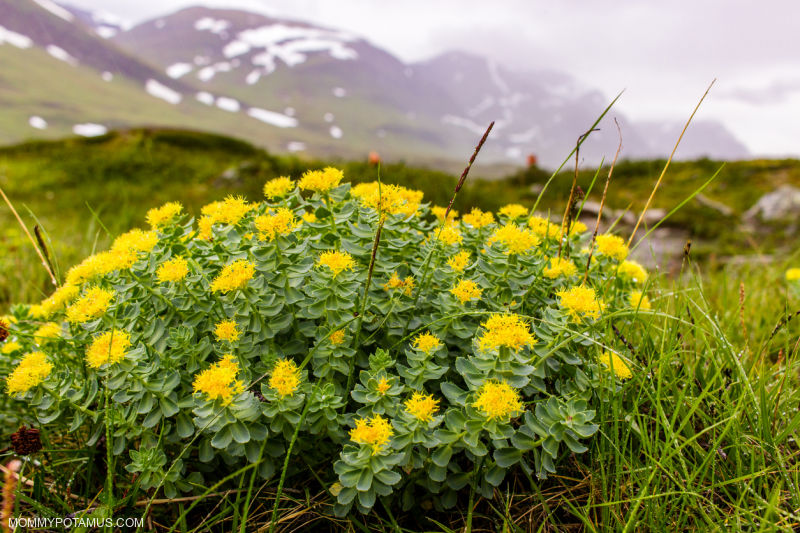
Some days I roast homemade marshmallow and gluten-free graham cracker smore’s over a beach bonfire, dive into rolling waves and tuck into bed on time for a good night’s sleep. Other days I find myself taking an unexpected trip to the ER for a broken bone, postponing everything to deal with a car repair, or staring at a to-do list that I created days ago but haven’t managed to cross anything off of.
Most days it’s a mix of both.
Life can be full of chronic little stressors that add up, and some unexpected big ones, too. Whether it’s a sleepless night, illness, surgery, stress at work, meltdowns at the store with a toddler, financial pressure, or just a challenging season of life, we all go through times that require a lot of us.
Ideally, we’re able to rest between these experiences so body and mind can recover – similar to the way muscles do after a workout. In real life, that doesn’t always happen. That’s why in addition to the fundamentals – good sleep, nutrition, movement and sunlight – I’m almost always taking one or more herbal adaptogens.
Adaptogens are herbs that help increase our resilience to stress, both physical and psychological. Rhodiola rosea is one of my favorites for a few reasons. For starters, it’s considered helpful for:
- Easing symptoms of stress-induced burnout and mental fatigue
- Supporting the Nrf2 pathway, aka the “longevity pathway”
- Counteracting oxidative stress
- Supporting immune function
- Relaxing tension within blood vessel walls
- Supporting balanced blood sugar and more
It’s also therapeutic in small amounts and generally considered safe – I’ll cover details and special considerations below.
First, though, I want to mention that none of these statements have been evaluated by the FDA, this article is not medical advice, and it’s not meant to diagnose or treat any condition. If you have a question about whether any herb or dietary supplement is right for you, please talk with a qualified healthcare professional. Okay, let’s dive in!
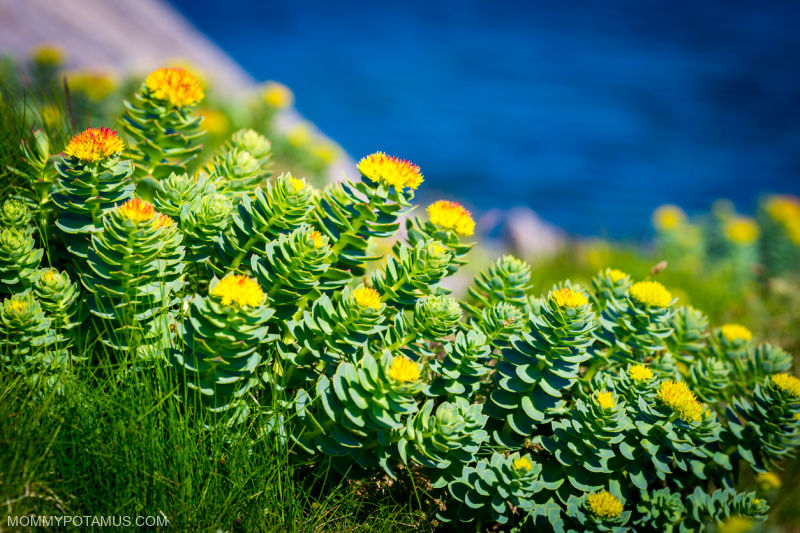
What is rhodiola?
Rhodiola rosea thrives in high altitude, low oxygen conditions with extreme cold (think Arctic circle) and intense UV light exposure. Many people believe that the compounds it creates to protect itself in such harsh conditions are what make it so potent as an adaptogen.
Also known as arctic root, golden root, rose root, rosenroot, and king’s crown, it’s a flowering, bushy succulent with roots that have a “distinct, fragrant, roselike odor.” (1) It’s not actually a member of the rose (Rosaceae) family, though – it belongs to the stonecrop (Crassulacae) family.
Though it grows in many parts of Europe, Asia and North America – Scandinavia, China and Alaska to name a few – it’s potency seems to vary by location. According to Donald Yance, author of Adaptogens In Medical Herbalism, an analysis showed that “Rhodiola rosea of Russian origin is two times more potent than Chinese Rhodiola rosea.”
That may be why Chinese emperors, “who were always looking for the secret to long life and immortality, sent expeditions into Siberia to collect and bring back the plant.” (1)
They were certainly not the only ones that sought out rhodiola, though. According to legend, Vikings “used it to achieve superhuman strength and endurance, as well as to promote health during the long winters,” and it’s popularity spans many other cultures, too. (2) It was mentioned by the ancient Greek physician Dioscorides and included in the first Swedish pharmacopoeia in 1755.
Also, in Siberia its spongy, fragrant roots have been traditionally given to couples before marriage in order to “to enhance fertility and assure the birth of healthy children.” (1) They’re still given as a bouquet in that region to this day!
Rhodiola’s bioactive compounds include:
- Rosavins (rosavin, rosin, rosarin)
- Salidroside
- Flavonoids (rodiolin, rodionin)
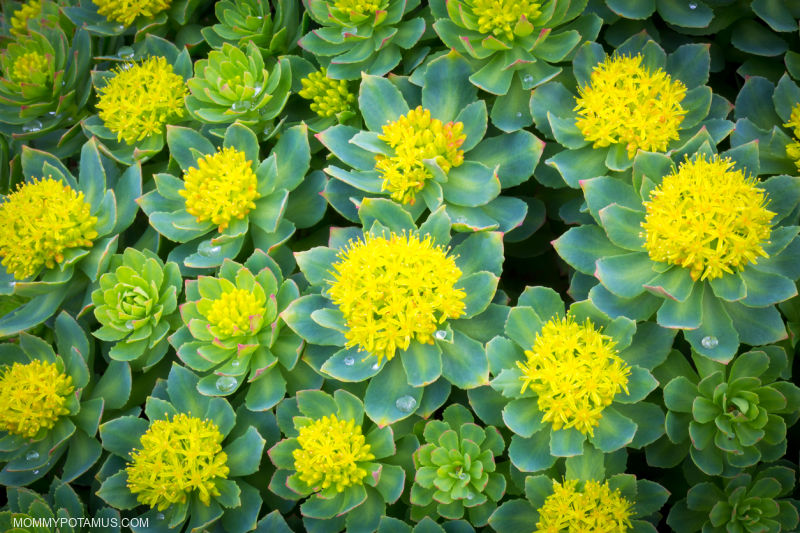
7 Benefits of Rhodiola
Rhodiola is used in traditional medicine to ease fatigue and support mental focus, physical endurance, emotional well-being, fertility and more. Many of its health benefits are thought to be related to its influence on the activity of monoamines and beta-endorphins. (3)
Modern research supports many of rhodiola’s most common traditional uses. Let’s take a look at them.
#1 – Stress Support
Research suggests rhodiola may help ease symptoms of stress-induced burnout in as little as a couple of weeks. (4)(5)
Both chronic and acute stress both activate our sympathetic nervous system, which then triggers the release of stress hormones like cortisol from the hypothalamic-pituitary-adrenal (HPA) axis. Rhodiola is thought to help calm an overtaxed system by supporting nitric oxide (which plays a role in nervous system function) and helping to balance cortisol.
#2 – Physical and Mental Performance
Research suggests that rhodiola supports cognitive function by reducing mental fatigue and increasing processing accuracy and alertness. (5) (6) (7)
According to the American Botanical Council, it’s “especially effective in reducing the number of errors during tedious tasks such as computer work or homework that require many hours of attention.” (8) In one study, “medical students studying in Russia were randomly assigned to groups given 100 mg/day of Rhodiola rosea extract (SRH-5 Swedish Herbal Institute), placebo, or nothing. Those given R. rosea had less mental fatigue, higher final exam grades, better physical fitness and coordination, and a greater sense of well-being compared to those who didn’t take the herb.” (8)
According to another fascinating study:
One unexpected finding was that although Rhodiola rosea was mentally stimulating, at the same time it was emotionally calming. As a result, people given the herb not only performed better on tests, but they also did not get frustrated, even after 12 or 18 hours of testing. In contrast, those given an inactive placebo became crabby, tired, and negative after so many hours of repeated testing. This unintended benefit was attributed in part to the herb’s effects on the stress response system as well as on neurotransmitters—serotonin, norepinephrine, and dopamine.” (8)
In terms of physical endurance, rhodiola has been used by Vikings, Russian cosmonauts and more to support strength and stamina. Both human and animal studies show it has a profound beneficial impact on exercise performance . . . in one study, rhodiola extract “given to rats increased swimming time up to 159%!” (9)(10)
#3 – Detox & Liver Support
The Nrf2 gene pathway controls over 200 genes that play a huge role in detoxification, antioxidant protection, and cellular resilience and has been called a “Guardian of Healthspan” and “longevity pathway.”
In other words, the activation of Nrf2 is a pretty big deal, and one of rhodiola’s constituents – salidroside – does just that. (11) Interestingly, it has extended the lifespan of animals in several studies. (12)
Rhodiola also seems to be specifically helpful for liver support – this animal study showed that rhodiola helps reduce oxidative stress that can damage liver cells. (13)
#4 – Immune System Support
Although other adaptogens such as Panax ginseng and eleuthero appear to have a more potent influence on the immune system, this study did find that rhodiola exerted a beneficial effect on immune function. (8)(14)
#5 – Antioxidant Support
Our bodies break down toxins via oxidation – a process that transforms them into water-soluble compounds that can be flushed out of the body. Oxidation produces free radicals, which can damage tissues and accelerate aging unless they are neutralized by antioxidants.
Rhodiola provides antioxidant support via the production of superoxide dismutase, a potent antioxidant enzyme. (7)
#6 – Supports Balanced Blood Sugar
Research suggests that rhodiola helps balance blood sugar levels by helping to optimize insulin response. (15)
For this reason, diabetics who are taking blood sugar lowering medication need to talk with their doctor before taking rhodiola, as it may amplify the effect of medication.
#7 – Cardiovascular Support
Rhodiola root supports the production of nitric oxide, a vasodilator that relaxes the inner muscles of blood vessels and causes them to widen. This vasorelaxation effect supports the cardiovascular system by increasing blood flow and easing tension within blood vessel walls.
Other Potential Benefits of Rhodiola
Rhodiola may ease altitude sickness symptoms when combined with cordyceps, reishi, and holy basil and taken for 4-6 weeks before traveling. (3) (1)
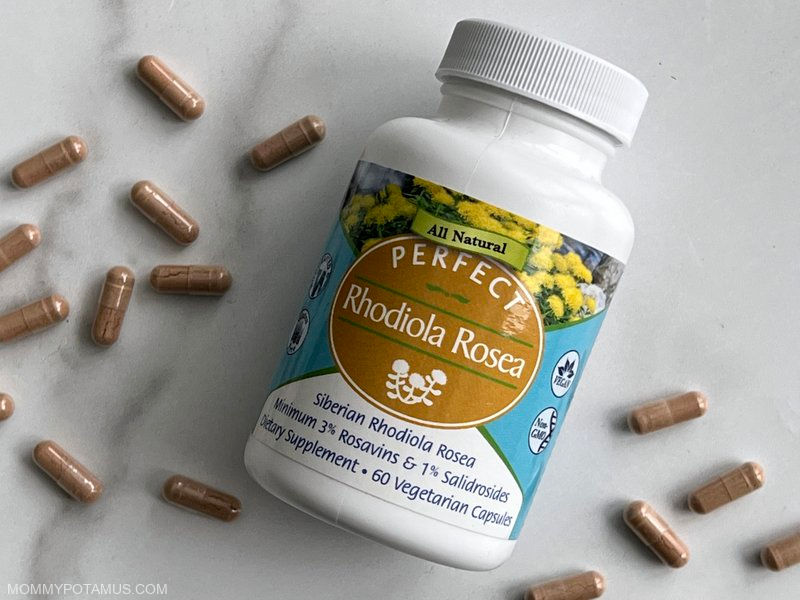
Tips for Using Rhodiola Supplements
Rhodiola is classified as a threatened (and protected) species in many parts of the world, but there are are a few places where it can be gathered in a sustainable and responsible way. However, finding a sustainable source is only the first challenge – when, where and how it is collected plays a huge role in potency.
According to Donald Yance, author of Adaptogens in Medical Herbalism:
Many of the bioactive chemical compounds found in Rhodiola rosea are not found in other rhodiola species. As well, there are products on the market that contain Rhodiola rosea, but unfortunately these products often have limited or even no biological activity at all. Common reasons for these deficiencies are poor harvesting during the wrong season, harvesting from a climate not suitable to the plant or from the wrong geographic area, harvesting the wrong species of the plant, and overdrying the plant or using an inferior extraction method.” (emphasis mine)
The roots should be at least four years old and gathered in the late fall or spring to maximize the potency of rhodiola’s bioactive compounds.
Capsule Recommendation: Although I sometimes work with the whole root, I prefer to buy freeze-dried rhodiola root capsules because they preserve more of the beneficial compounds than traditional drying methods. They’re sustainably harvested in the Siberian Altai Mountains and contain the same ratio of rosavins to salidoride used in human studies -3% rosavins and 1% salidroside.
Also, adaptogens generally work best when:
- Taken together – They work synergistically together to create a more powerful effect. Rhodiola can be overly astringent if taken alone, so it’s usually combined with other adaptogens like cordyceps.
- Taken consistently – Benefits have been noted within a couple of weeks of consistent use, but it may take longer for some. It’s generally a good idea to take adaptogens consistently for a period of time followed by a break. I usually rotate in a different adaptogen when I am taking a break from rhodiola.
Serving Recommendation: Since adaptogens are herbs rather than pharmaceutical drugs, there are no “dosages.” However, herbalists do share knowledge about what methods of consumption seem to produce a beneficial effect for most people. For rhodiola, “Low doses seem to have a more reliable effect than large doses.” (16)
In Adaptogens: Herbs for Strength, Stamina and Stress Relief, ethnobotanist David Winston and herbal expert Steven Maimes recommend two to four capsules of standardized extract (3-5% rosavins and 1% salidroside) per day.
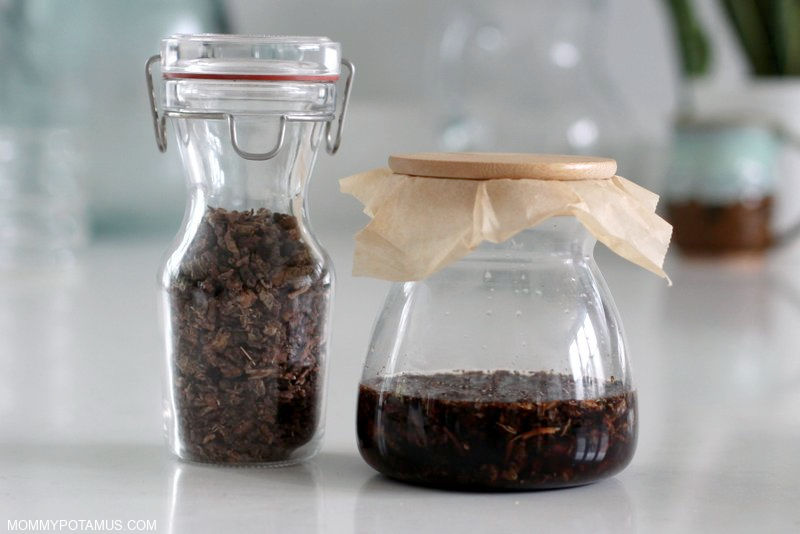
How To Make Rhodiola Root Tincture
As I cover in this article, the different ways we can prepare an herb for use – using water, alcohol or glycerin, for example – plays a significant role in which constituents are extracted. Alcohol tincturing is generally used with rhodiola root because it’s best at drawing out the desirable compounds. Here’s how to tincture rhodiola root:
Ingredients
- 1 ounce dried Rhodiola rosea root (by weight)
- 5 ounces of 100 proof alcohol (by volume)
To Make
- Add 1 ounce of dried rhodiola root (by weight) to an 8 ounce jar. Pour the alcohol over the rhodiola root, then cover the with a lid and shake it well. If desired, write the start date on the jar using a sticky note, label, or piece of tape – it makes keeping track of how long it’s been steeping easier.
- Place the jar in a dark, room temperature area. (I keep mine in a kitchen cabinet.) Let the mixture steep for 2-5 weeks, shaking occasionally.
- When it’s ready, strain the mixture through a cheesecloth, making sure to squeeze out as much liquid as possible. Pour the tincture in a clean jar or dropper bottle and store it in a cool, dark area.
Suggested Use
In The Modern Herbal Dispensatory, herbalists Thomas Easley and Steven Horne suggest 1-3 ml (0.2-0.6 tsp), 3 times daily.
Safety Considerations
Generally considered to be safe, nontoxic, and non-addictive, the herb should nonetheless be taken only according to recommended dosage. Overdose or hypersensitivity can cause symptoms of dry mouth, dizziness, drowsiness, or overstimulation. If the herb causes sleeplessness, take only once per day, in the morning.” – Making Plant Medicine
Also:
- No reliable information is available about the safety of rhodiola for pregnant and/or breastfeeding moms, so avoidance is recommended.
- If you have a medical condition or take any pharmaceutical medication, please talk to your healthcare provider before using rhodiola. It is not recommended for certain conditions (particularly patients who are bipolar, manic, or paranoid) and it may increase the effect or otherwise interact with certain medications including antidepressants, diabetes medication, blood pressure medication, and others. (1) Click here for more information.
More Adaptogens To Try
Adaptogens – especially rhodiola – are usually used in combination with each other. I typically include three or more into my daily herbal tea/tincture/supplement routine. Here are some worth considering:
Cordyceps – Once rare and mostly reserved for nobility, cordyceps is now cultivated and widely available. It is considered one of the most valuable traditional herbs in China.
Eleuthero – Before it was the subject of classified Soviet research, eleuthero was regarded as one of the most precious herbs in the known world by Li Shih-Chen, a 16th century herbalist who compiled the Compendium of Materia Medica.
Panax ginseng – According to Adaptogens: Herbs for Strength, Stamina and Stress Relief “In Western clinical practice, Asian ginseng is considered the most stimulating of the adaptogens.”
Reishi – Sometimes referred to as the “mushroom of immortality,” the reishi (Ganoderma lucidum) mushroom has long been believed to promote vitality and resilience.
Holy basil – Often called “The Elixir of Life,” it’s been revered as one of India’s most powerful & sacred plants for 3,000+ years. In addition to being an adaptogen, it has a wide range of therapeutic properties and traditional uses ranging from supporting skin elasticity to helping balance blood sugar levels.
Maca root – Legend has it that Incan warriors used to consume maca before battle to increase endurance, and research suggests there may be wisdom to this tradition. Read more about why here and get five maca energy bar recipes.
Oh, and you may find this post helpful: 15 Ways To Be Kind To Your Adrenals
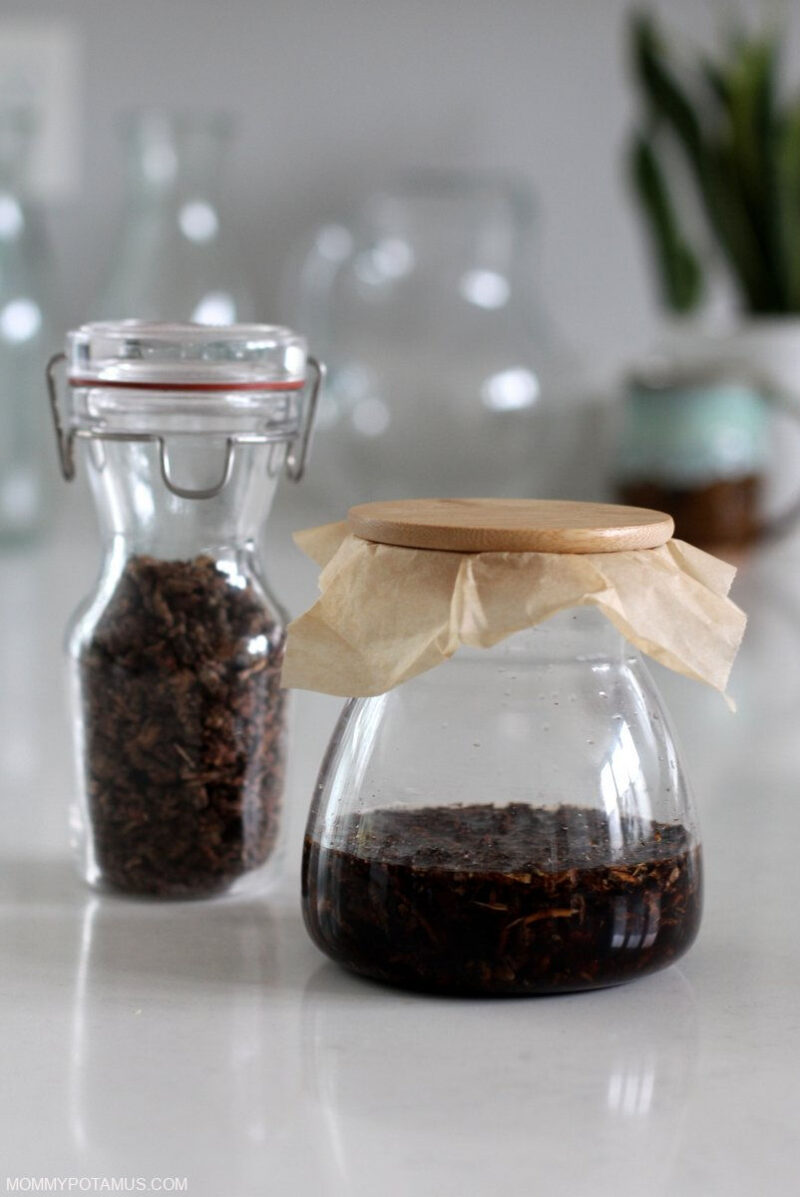
Want more research-backed natural remedies?
No problem, I’ve created a free ebook for you – Kitchen Apothecary: 25+ Natural Remedies Using Ingredients From Your Pantry – as a gift for signing up for my newsletter. You’ll also get updates when I post about safe essential oils for pregnant/breastfeeding mamas, exclusive gifts and coupons (I was able to give away a jar of free coconut oil to anyone who wanted it recently!), plus other goodies.
Sign up using the form below.
- David Winston and Steven Maimes (2019) Adaptogens: Herbs for Strength, Stamina and Stress Relief
- Jovial King and Guido Mase (2016) DIY Bitters
- Donald Yance (2013) Adaptogens In Medical Herbalism
- Mark Cropley et. al. (2015) The Effects Of Rhodiola Rosea L. Extract On Anxiety, Stress, Cognition And Other Mood Symptoms
- V Darbinyan et. al. (2000) Rhodiola Rosea In Stress Induced Fatigue–a Double Blind Cross-over Study Of A Standardized Extract SHR-5 With A Repeated Low-dose Regimen On The Mental Performance Of Healthy Physicians During Night Duty
- V A Shevtsov et. al. (2015) A Randomized Trial Of Two Different Doses Of A SHR-5 Rhodiola Rosea Extract Versus Placebo And Control Of Capacity For Mental Work
- Ewa Jówko et. al. (2018) Effects Of Rhodiola Rosea Supplementation On Mental Performance, Physical Capacity, And Oxidative Stress Biomarkers In Healthy Men
- Richard Brown, MD and Patricia Gerbarg, MD. Non-Drug Treatments for ADHD
- Christopher G Ballmann et. al. (2019) Effects of short-term Rhodiola Rosea (Golden Root Extract) supplementation on anaerobic exercise performance
- A Parisi et. al. (2010) Effects of chronic Rhodiola Rosea supplementation on sport performance and antioxidant capacity in trained male: preliminary results
- Haiying Tang et. al. (2016) Salidroside protects against bleomycin-induced pulmonary fibrosis: activation of Nrf2-antioxidant signaling, and inhibition of NF-κB and TGF-β1/Smad-2/-3 pathways
- Mahtab Jafari et. al. (2022) The impact of Rhodiola rosea on biomarkers of diabetes, inflammation, and microbiota in a leptin receptor-knockout mouse model’’
- Ze-ran Yang et. al. (2016) Salidroside alleviates oxidative stress in the liver with non- alcoholic steatohepatitis in rats
- Mari-Carmen Recio et. al. (2016) Immunmodulatory and Antiproliferative Properties of Rhodiola Species
- Mahtab Jafari et. al. (2022) The impact of Rhodiola rosea on biomarkers of diabetes, inflammation, and microbiota in a leptin receptor-knockout mouse model
- Rico Chech (2016) Making Plant Medicine

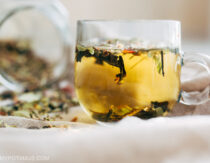
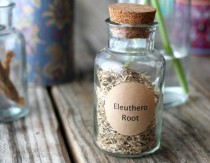
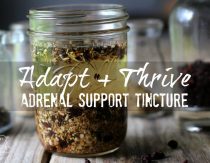

I bought your downloadable book several years ago. I am now enjoying your blog. I appreciate your wisdom! You are always very thorough in your research. Thank you for doing this! Happy parenting, every step of the way! (Our daughters are already 19 & 22; they grow up too fast!)
Yuko
🙂
Thank you for providing some information regarding pregnancy and nursing mamas. Very helpful post & I will be sending this to a few type A personalities for them to read lol. Also…do you handmade your labels or do you buy them and print on them? I love the look!
I buy the stickers and run them through my printer. So glad you found the post helpful!
awesome, I’ll be on the look out for that style paper/sticker 🙂 Thanks!
Hi,
Im trying to get off my anti-depressants and want to supplement with aptagens. Im also trying to get pregnant. Would you suggest taking nac as a supplement to rhodiola?
Thanks.
Hi Daisy, given your specific goals I suggest talking this question over with your healthcare provider. Best wishes!
I was taking inositol with magnesium + glutathione…. and I got pregnant quickly!
What if we just want to use this adaptive topically in cream? I’m breastfeeding and dealing with acne and scarring and have come upon a cream that has this herb as an active ingredient. Is topical use okay?
I would contact the manufacturer and ask. As I mentioned in the post, I don’t know of any published safety data on rhodiola use while breastfeeding, but they may have access to studies (especially those in other languages) that I haven’t seen.
I thought I’d get this out there that Rhodiola brought my period back early on during breastfeeding so if you want to avoid that, go for eleuthero instead. It doesn’t seem to affect fertility.
Thank you for sharing your recipe’s and all of the valuable information you’ve gathered to help all of us. It’s so appreciated…jan
I hope this works for me
Very interesting write-up on Rhodiola rosea, sounds like the perfect plant for planet earth:) I can see why it is given as a wedding gift, makes a beautiful bouquet. It must have been an inspiring find in the arctic North.
Hi Heather~
I have not been able to find Rhodiola Rosea Root. AM I able to use the powder instead?
Thank you. ♡
Teressa
I don’t recommend the powder for making a tincture, but you could mix it into a smoothie or something or consider the capsules mentioned in the article.
Thank you…can you make tea from dried rolhodiols roses? I have some from quite awhile ago. I have a great great day I love MS fatigue, low energy, kind of a sadness. I think all of it is MS related I’m 74 and I’ve done a great deal of exploring and alternative therapies herbs, tinctures, etc. thank you.